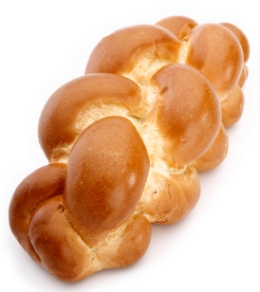
It is necessary to separate only breads made from barley, maize, spelt, wheat or oats. Challah is traditionally made with white flour which was more expensive and considered more luxurious than other less processed forms of bread (until the modern era, when mass production made white bread more affordable, many people ate only black bread during the week). Being made from a more luxurious form of bread, and being braided to enhance its appearance, challah was considered especially suitable for consumption on Shabbat and other holydays when there was a desire to honour and enhance the day by using only the best possible items.
A piece of challah for the ritual burning can be removed after baking if it has not been done prior. A special blessing is recited upon this separation:
“Blessed are You, Lord our God, King of the Universe, who has sanctified us with His commandments and commanded us to separate.”
On Friday Night, two challot (the plural of challah) are present on the dinner table. This commemorates the double portion of manna that the people of Israel in the desert received from God on Fridays. This double portion provided them with manna for Shabbat. Some people sprinkle sesame or poppy seeds over the challah before baking to represent the dew which covered the manna.
A blessing is recited before the breaking and eating of the challah. It is Sephardi practice to refrain from cutting it with a knife, because a knife reminds us of weapons of war like those used to profane the altar, as set out in Exodus 20:22. This custom also reflects Isaiah’s prophecy in Isaiah 2:4: “And they shall beat their swords into plowshares…” Thus challah is best broken up and divided by hand.Sephardi Jews break up and divide challah by hand. Some Ashkenazi Jews also follow this custom.
Before the challah is blessed, and especially during the blessing over the wine (or grape juice), it is kept covered by a cloth. This is to shield its sensitive feelings: as bread is usually the principal food at a meal and the only specific food over which a blessing is said, the rabbis teach that the challah may be offended that on Shabbat the wine not only receives a separate blessing but also receives it before the challah is blessed. This teaches us respect and concern for the feelings of others, even if the ‘others’ happen to be inanimate objects.
After the challah has been blessed it should be salted, in recognition of the ritual of the Temple sacrifices, and a reflection of Genesis 3:19: “By the sweat of your brow shall you get bread to eat.”
It is customary to leave the broken bread on a communal plate, or for a piece to be put on every individual plate instead of handing it to people, to stress that we do not receive our bread from man. This further reminds us of God’s presence, creation and provision.
Challah is much more than simply plaited bread eaten on Shabbat and holidays. It is highly symbolic, reminding us of the significance of even the smallest things, and also that there is reason for everything we do.
Links
About.com: How to Make Challah
Aish Hatorah: Challah (a collection of challah recipes)
All Recipes: Challah (with links to other challah recipes on the site)
Judaism 101: Jewish Cooking
My Jewish Learning: What is Challah?
You Tube: How to Braid a 6 Strand Challah



